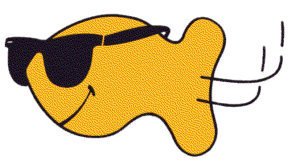Subjects:
by category
Ailments
* diagnosis
* diseases
* quarantine
* water
Care
* Basic
* Advanced
* Fishbowls
* water
change
Facilities
* bi-laws
* chapters
* mail
us
GoldfishSanc
The Goldfish Sanctuary
proper Goldfish care

Instructions for Partial Water Change
You should do a partial water change every week or so depending on how many fish you have, and how big your tank is. If your tank is somewhat full, the fish will produce more waste. If stirring the gravel reveals debris, more frequent water changes are indicated. When in doubt, more often is better.
Have your water ready ahead of time (left to sit overnight to remove chlorine, or treated with a dechlorinator). Use a clean bucket for this purpose. (Use no soap or detergent!) I suggest buying a bucket which you will use only for clean fish water.
Be gentle when doing a water change. You don't want to stress your fish. Goldfish are very curious, however, and over time, you will find that your fish won't mind your hands in the tank at all.
Before beginning, make sure your hands are clean and well-rinsed. There should be no soap or detergent on your hands at all. Soap is poison to fishes. Never use soap to clean anything that is going into your tank! Also, disconnect anything electrical that may be nearby.
How much water will you need? I suggest a partial water change of 30%. (about 3 gallons for every 10 gallons of tank). Since your fish are used to the water quality of your tank, adding too much new water can stress them. Small, frequent water changes are best.
If your tank has algae you may want to scrape it off before beginning. You can use an algae scraper or an old credit card. I have found both to work very well.
Start by removing 30% of the water in the tank. A siphon tube is ideal for this because it lets you suction debris and algae out of the gravel. When you have removed 30% of the water, you may add fresh water. Go slowly! You don't want a big splash, and neither do the fish.
You are done. Make sure everything is dry before reconnecting anything electrical.